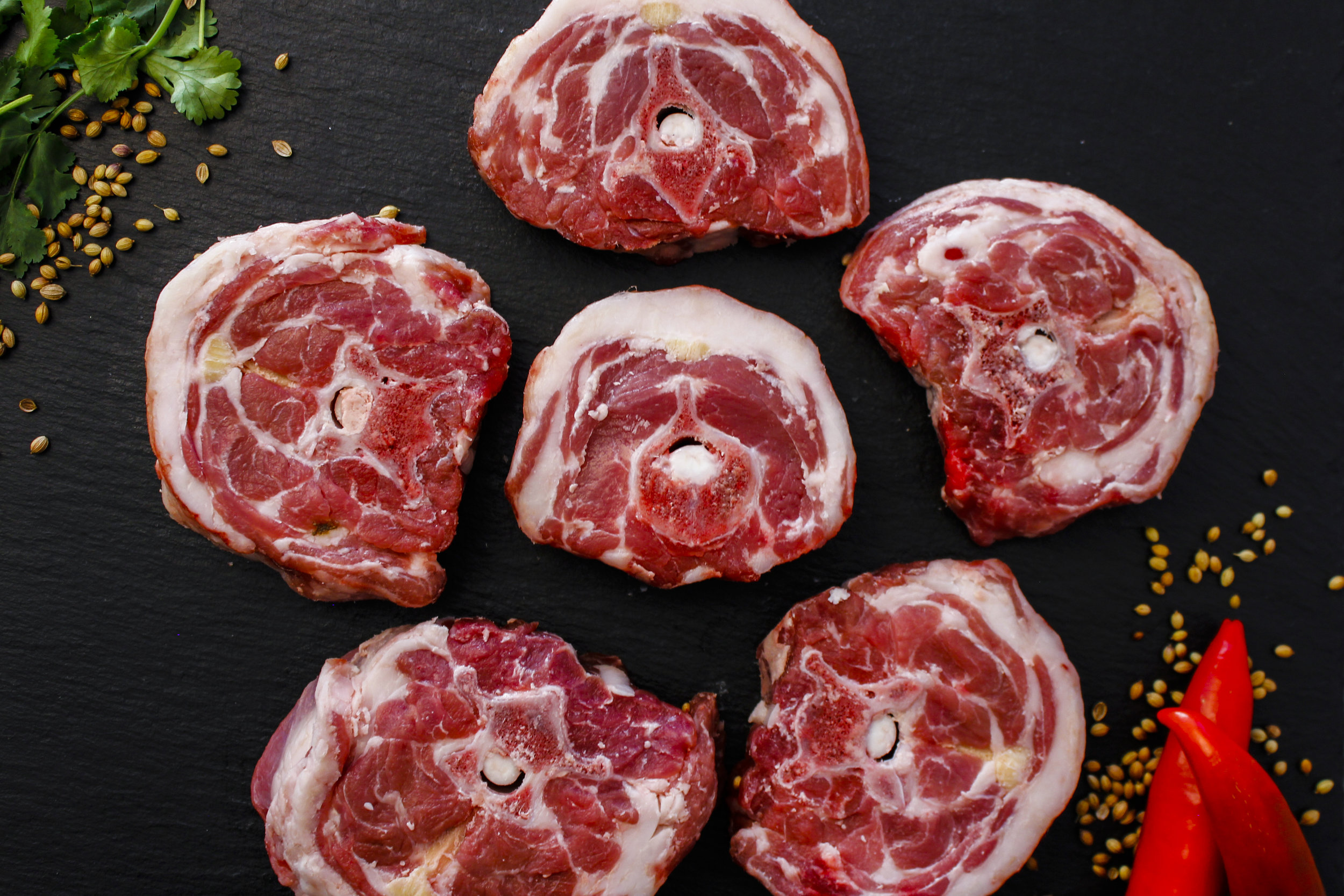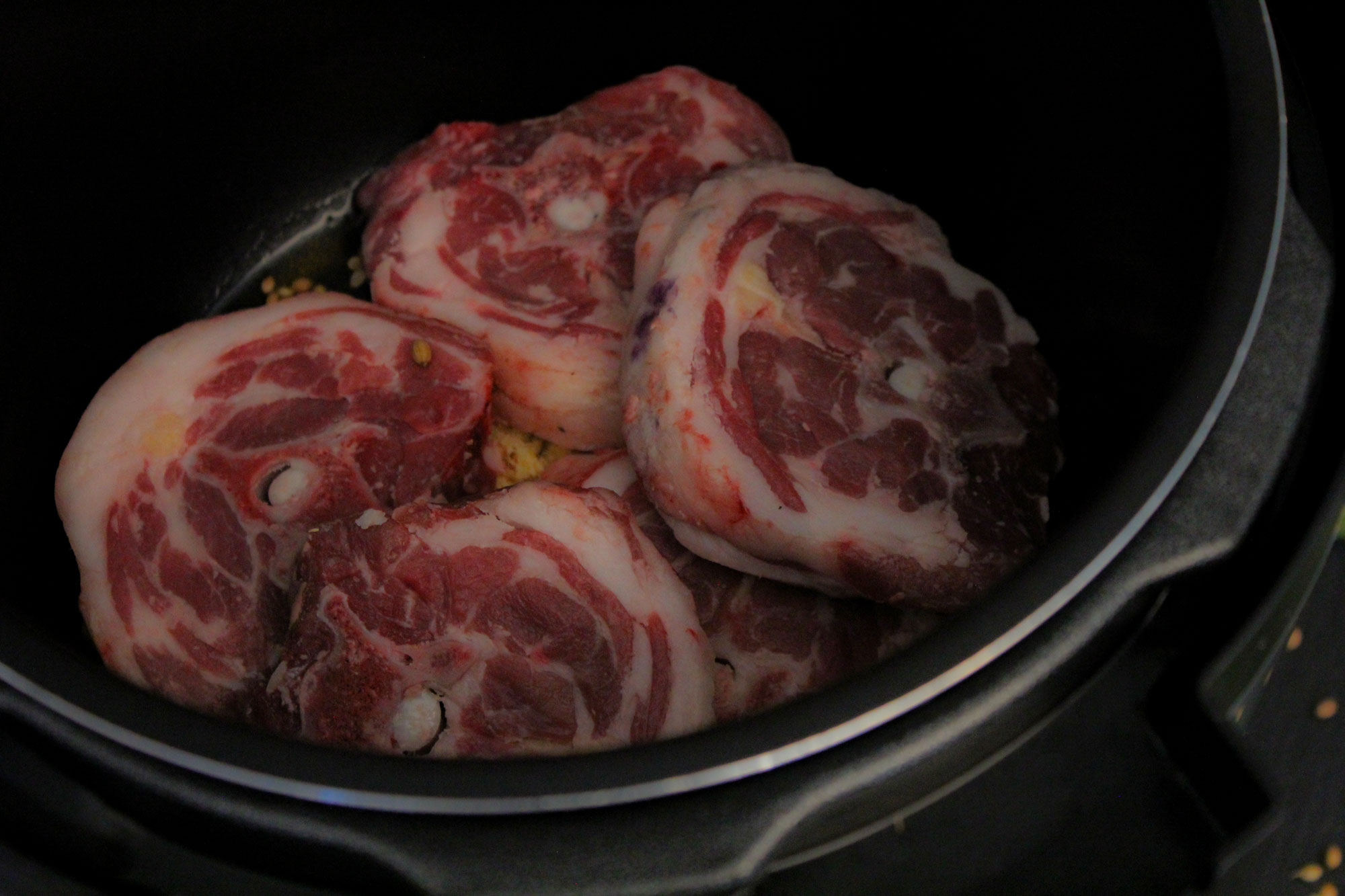Sheep in the winter are more than just a woolly knit!
I am currently on a culinary journey to discover the new and classical uses of the delicious cuts of lamb and mutton and to experiment with it. In this series I discovered and got acquainted with the leg of lamb, shoulder and tails (Red Meat Magazine December 2016, February and April 2017) but a few surprises still remains on the lamb and mutton carcass! Join me on this journey!
I do not like the winter. There are too many dark hours in the day, you need to dress and wrap up like an ancient mummy just stay warm and your favourite summer fruits are only available on the pages of December through February’s food magazines! I am whole heartedly convinced that we as South Africans are designed and made for the summer sun shine and therefore need something extra to make us feel warm and fuzzy from the inside during the winter months. I am not talking about the trusted comfort of Old Brown Sherry (although it does help), but about a lekker lamb stew, breyani or potjie.
So, with an open mind and no idea which cut to use, I went to my favourite butchery. To my surprise the first cut my butcher suggested was a whole sheep’s neck. He believes that if you want red wine, you drink it out of a glass and if you want to cook tomatoes, you put it in soup, and I tend to agree with him. He describes neck as a “self-saucing pudding” which only needs a little of the correct liquids to ensure you have a tender and succulent piece of meat after a few hours. I decided to use my favourite staple ingredients in my first attempt to cook the perfect lamb’s neck (well, I had three…), these ingredients are fresh lemon juice, some white wine, a cup of strong brewed Rooibos tea, and spice mix of cinnamon, aniseed, ginger and cumin. Exactly like most recipes suggest, I closed the casserole and went on with the day as the meat simmered in the liquid and spices mix. I will be honest, after about three hours, I started to get a bit worried about this stiff-necked situation (I really need to invest in a proper pressure cooker for my kitchen). After the fourth hour, all my concerns melted away as the tender meat literally fell off the bone, ready for tasting!
It was love at first bite. The taste is almost difficult to describe. While the leg of lamb had a subtle elegant taste, and the shoulder was a bit sweeter, the neck has the very satisfying taste described as umami. Umami is the savoury taste sensation you experience from eating brown onion soup or Marmite, the only difference here is that the neck produced this flavour without the addition of any artificial flavour agents.
The average weight of a sheep’s neck (from a C2 lamb) was 792g, and reduced to a cooked weight of about 360g. The meat easily came away from the bone giving you the perfect pulled lamb for any tasty dish. I decided to use the pulled lamb in a bowl dish, served with winter vegetables (sweet potato, butternut, carrots, and onions). This pulled lamb will also work very well with any pie, pasta, pita or sandwich recipe!
The other cut suggested by the butcher, is the trusted winter favourite lamb shank, cut into smaller pieces. His first recipe suggestion to use this with, was a good old potjie. The trick and secret to a successful potjie is to leave it alone! This will give the fresh vegetables and herbs a fair chance to marry with the flavours of the shank. I had a different idea, and decided to try something a bit more exotic but still true to the flavours South Africans love. This idea however required a stop at a different store - a local Indian spice shop, where an elderly lady combines a mix of secret herbs and spices called “Garam Masala”. Within this mixture you can find coriander, cumin, mustard and cardamom seeds, ground cinnamon, nutmeg, chillies and cloves.
Compared with the neck, the shanks had a wilder aroma for this city-girl, when I opened the packet. This might be the reasons why our Australian neighbours like to tell stories of this cut (now sold at higher prices) being used for dog food. Luckily I remembered an old tip my aunt taught me, to rinse the shanks with warm water, to get rid of the strong wild smell.
I would not categorise lamb shanks as a cut to use in stews. Stewing meat sounds as if it should be tough and have a bone, which will take days to cook. The meat to bone ratio of these lamb shanks were good and did not take more than two hours to simmer in the meat stock. In preparing the meat, I sprinkled it with lemon juice, rolled it in the masala mix and quickly browned it in a hot pan. I then placed the shank pieces in a pot with homemade meat stock with a bit of tomato paste, and some more of the masala mix to taste. I placed the lid on and left it alone, only stirring to prevent burning. After about 90 minutes, my shank curry was tender, full of flavour, and just right for my exotic Bunny-chow bowl.
To me, lamb or mutton curry is synonymous with Bunny-chow – an Indian dish which is sold in almost every restaurant and café in Durban. Traditionally Bunny-chow is a lekker saucy and aromatic curry inside a hollowed out bread, topped with slap chips. My Bunny-chow bowl is a healthier version of this favourite. I stay true to the curry, with my lamb shank curry, but replace the bread and chips with croutons (roasted bread cubes) and oven-baked orange sweet potato slices, and added some fresh coriander leaves. The croutons and sweet potato slices are very easy to make and can be roasted in the oven at the same time. I sprinkled the bread with olive oil, salt and pepper before roasting it to golden perfection. Place the sweet potato slices in the bottom of the bowl and dish the shank curry on top, garnish with croutons and fresh coriander leaves. You can also add steamed green beans or sugar peas to the curry for added fibre and nutrients!
I am pleasantly surprised with the versatility of these two lamb cuts, and I am looking forward to cooking and experimenting with winter recipes for neck and shanks. Please send me an email (posbusmarina@gmail.com) with your favourite recipes, and ideas or post it on our Facebook page at “Cooking with Lamb” or “Budget cooking with Lamb”. Be on the lookout for great recipes on www.cookingwithlamb.com to keep you warm and fuzzy this winter!



